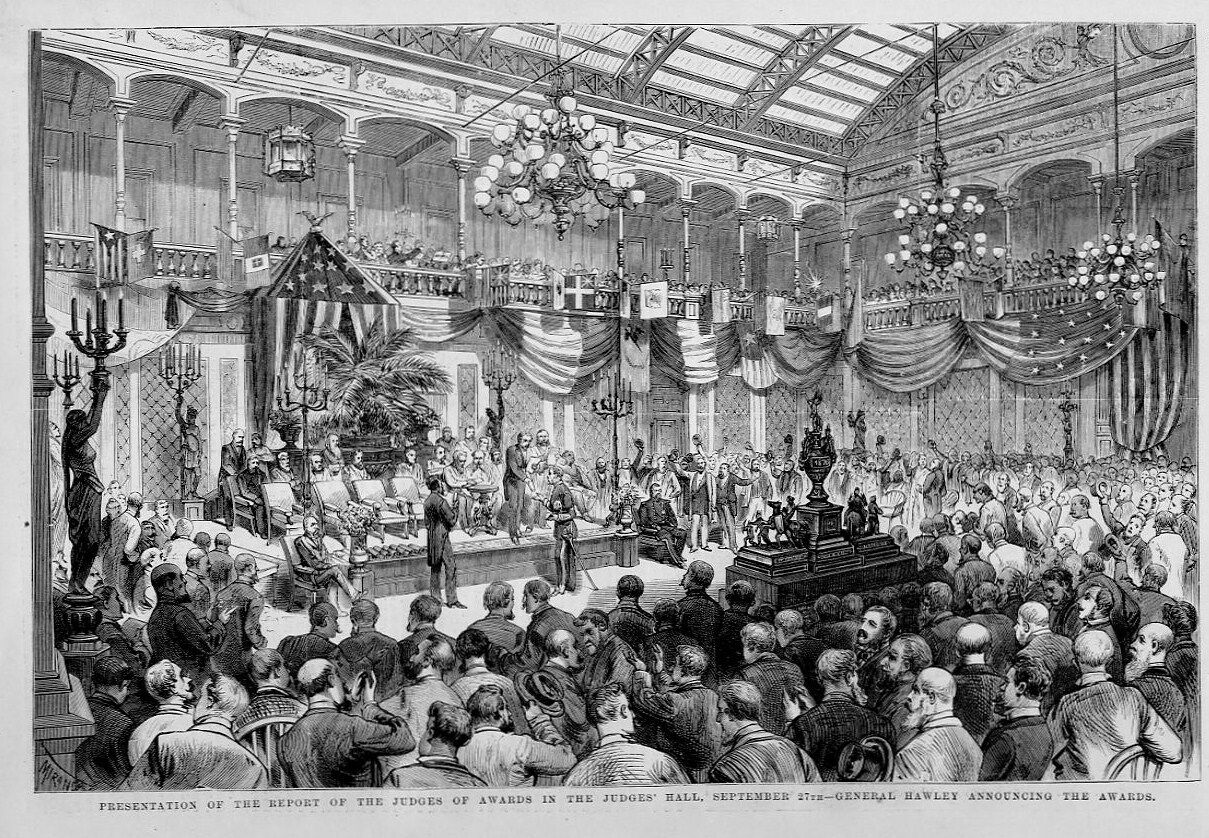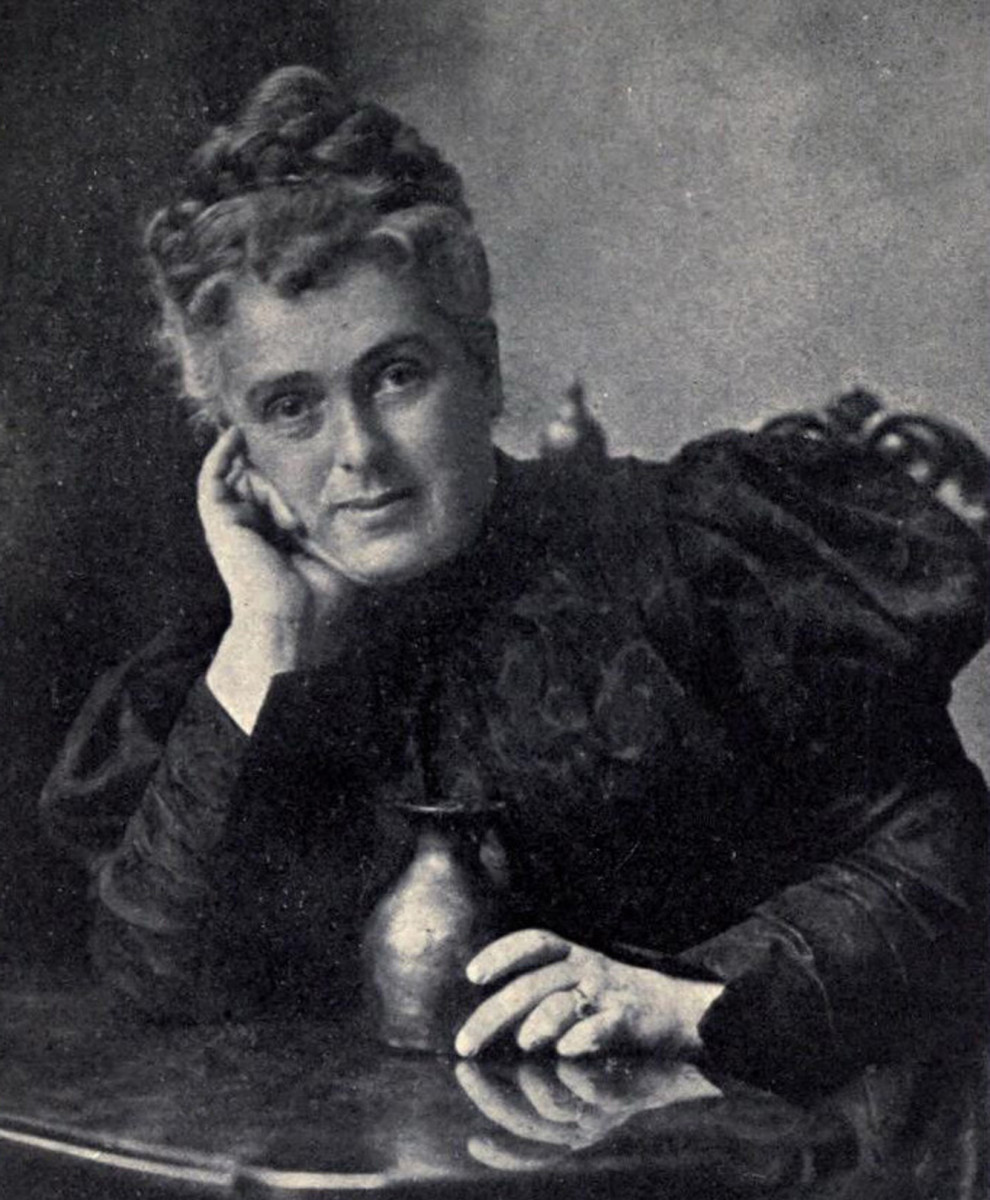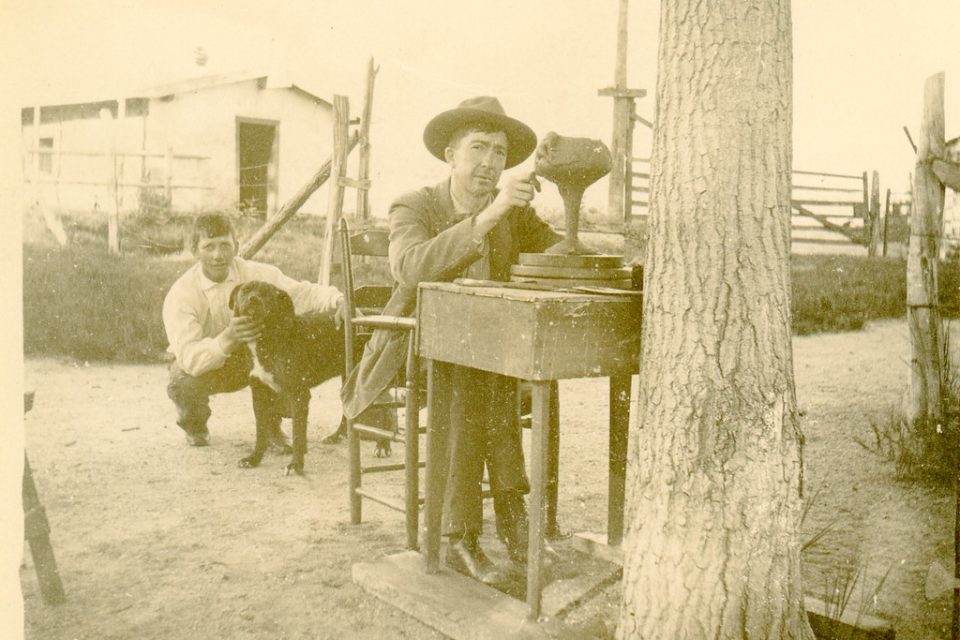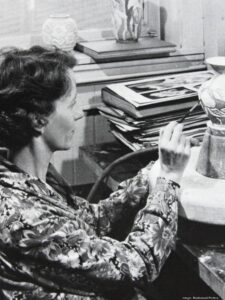Rookwood Pottery has a long history of delighting ceramics lovers from all over the world. The company is a Cincinnati Ohio favorite, and its history weaves throughout the story of Queen City. The pottery studio’s ceramics are well-known around the world for their expert craftsmanship and stunning designs. Rookwood Pottery’s production is done at its flagship location in an 88,000-square-foot building at 1920 Race St in the vibrant Over-the-Rhine neighborhood of Cincinnati.
Ceramics Have a Long History, Dating Before Ancient China
Making ceramics dates to 28,000 BCE, and the earliest documented piece is known as the Venus of Dolni Vestonice. Ceramic works have been found in China dating back to 18,000-17,000 BCE, from which it spread to other regions of Asia. One of the first and most essential advances in ceramic history occurred with the wheel’s invention. This allowed the wheel-forming technique to take place. This process involves clay put on a wheel and formed into a vessel as it spins around. Porcelain was eventually created in China beginning in 1600-1046 BCE and was highly developed by 618-907 AD.
At this point, it was starting to be exported and spread throughout the Islamic Middle East. By the Ming Dynasty (1368-1644 AD), porcelain was being exported to Europe. This Sino-European connection was established in large part by the journey of Marco Polo in the 13th century. Europeans would eventually figure out the process of how to make porcelain, thus expanding the market even further. Many of these advances in the development of ceramics contributed to the state of the American pottery and ceramics market in the mid to late 19th century.
Maria Longworth Nichols Storer Starts Rookwood Pottery Company
Rookwood Pottery has its origins in Maria Longworth Nichols Storer (1849-1932), the daughter of Joseph Longworth (1813-1883), a wealthy Cincinnati, Ohio businessman and winemaker. Longworth and his father, Nicholas Longworth (1783-1863), are well known for their arts support. Donating land to the Cincinnati Art Museum and financially supporting the Art Academy of Cincinnati. The Longworths have also been credited with sponsoring African American artist Robert S. Duncanson’s tour of Europe.
Storer’s inspiration for pottery and ceramic would be advanced after her attendance at the 1876 Centennial Exposition in Philadelphia, Pennsylvania, the first official World Fair. The United States would host 37 nations worldwide to exhibit art, manufacturing, and products in pavilions along the Schuylkill River and Fairmount Park. Storer’s exposure to Japanese ceramic artists’ techniques in the Japan pavilion at the fair inspired her ceramic art upon returning to Cincinnati, Ohio.

Rookwood Pottery was initially based in a school building in the Over-the-Rhine neighborhood in Cincinnati that Longworth had bought in March of 1880. Storer would name the building Rookwood based on her father’s country estate outside Cincinnati, Ohio. The early history of Rookwood Pottery consists of Storer purchasing a kiln and pulling the first wares from it on Thanksgiving Day of 1880.
Along with Mary Louise McLaughlin (1847-1939), a future competitor in the pottery market, both an under and overglaze kiln was built to improve the production process. These developments would cement her legacy as one of the first women-owned manufacturing companies in the United States. The company’s headquarters would later be moved to a hilltop in the Mount Adams neighborhood of Cincinnati, Ohio. The building was designed by H. Neill Wilson (1855-1926), the son of a very prominent Cincinnati architect, James Keys Wilson (1828-1894).

Rookwood History and Process
Storer would eventually implement a foundational design for Rookwood pottery by developing the “Standard Glaze” to be used prominently in their pottery designs. The pottery glaze was mostly used on floral motifs and in the production of portraits. Storer would also develop the “Tiger Eye” glaze, which produced a highly collectible gold tone deeper in the glaze. Rookwood was also well known for its history of the employment of women.
Additionally, Rookwood has origins in making relief-type-colored ceramic clay in various tones. The ceramic would be painted by patrons of the pottery studio who would come in and paint the greenware for a price. Rookwood would eventually struggle through the Great Depression and shutter its doors permanently in 1941 because of losses incurred during the economic crisis. Rookwood would subsequently move to Starkville, Mississippi, after being acquired by Herschede, a famous clockmaking company, before closing permanently in 1967. Rookwood would eventually be purchased again by Michigan ceramic collector Dr. Arthur J. Townley (1926-2011), who owned the company for many years before the company was acquired again by a group of Cincinnati investors in 2006 and brought Rookwood back to Queen City.

Early Rookwood Artists Create Ceramics that Stand the Test of Time
In the first decade Rookwood operated, the company built its talent pool aggressively. Rookwood was hiring some of the best talents from local competitors Avon, Wheatley, and even notable pottery designers from around the country. These early Rookwood artists produced some of the most coveted art in American pottery that is found in museum collections. They created the enigmatic yet iconic movements of Art Deco, Art Nouveau, and Arts and Crafts in American pottery. In many instances, they were the earliest collaborators, directors, and innovators for Rookwood. They were leading and developing techniques that America has been enjoying for over a century.
Albert Robert Valentien
Albert Valentien (1862-1925), who often signs his name A.R.V. was the first art director at Rookwood in 1881. At 19, the prodigal artist had already shown enormous talent as a teenager working previously at Wheatley Potters. In 1900, he won the silver medal at the Paris Exposition. Valentien would be best known for his wildflowers, fish, birds, and a rare style of silver underlay and overlay on his ceramic pottery.
The Cincinnati, Ohio native would move on from ceramics and become a full-time painter by age 43. He learned to paint from famed artists Frank Duveneck (1848-1919) and Thomas Satterwhite Noble (1835-1907) at the Art Academy of Cincinnati. In 1908 he moved to the La Jolla area of San Diego, California, to work for Ellen Browning Scripps (1836-1932). Scripps was a wealthy philanthropist and journalist who invested in newspapers. Her immense interest in education and science led her to commission Valentien to record and paint California’s wildflowers. Over nine years on the art commission, he would produce nearly 1200 watercolor paintings throughout 52 portfolios.
Auction Record: $37,510 (2014)

Kataro Shirayamadani
Kataro (Sherry) Shirayamadani (1865-1948), who sometimes signs his ceramics with KS, was born in Tokyo, Japan. Shirayamadani was already a successful porcelain painter by the time he immigrated to the United States. The artist initially moved to Boston to work for the Fujiyama porcelain import company. In 1887, he met Maria Longworth Nichols Storer, who would offer the artist a position with Rookwood Pottery in Cincinnati, Ohio.
While at Rookwood, he would be instrumental in creating shapes of vases that would become the pottery company’s cornerstone designs. Around 1900, he collaborated with Tiffany Studios, painting some of the vase bodies adorned with the typical Tiffany mosaic glass lampshade. The majority of Shirayamadani art contains landscapes, birds, and flowers in matte and gloss glazing finishes. Shirayamadani’s ceramics can be found in many museum collections, including the Indianapolis Museum of Art, Philadelphia Museum of Art, Cincinnati Museum of Art, and the Metropolitan Museum of Art (MET).
Auction Record: $52,635 (2015)

Artus Van Briggle
Artus Van Briggle (1869-1904) worked at Avon Pottery in Cincinnati, Ohio, by 17 years of age. The artist shows an early interest in art, taking courses at the Art Academy of Cincinnati. By the time Van Briggle turned 18, Rookwood would acquire his skills. However, Van Briggle’s ambitions would never grow tired. The artist attended Académie Julian in Paris, France, where he would also exhibit at the Paris Salon.
Upon Van Briggle’s return to the United States, he moved to Colorado Springs, Colorado, to start Van Briggle Pottery. The artist would typically sign his works as AVS. Artus Van Briggle died in 1904, and the company would continue to be run by widowed artist Anne Louise Gregory (Anna) Ritter (1868-1929), often marking her art as Anna Van Briggle. The Van Briggle pottery company would be well known for its turquoise blue matte glazes across various art nouveau-style vases and female figural forms.
Auction Record: $192,000 (2016)
Edward Timothy Hurley
Edward Hurley (1869-1950), who sometimes signs his ceramic as ETH, was a native of Cincinnati, Ohio resident for his entire life. Hurley was well educated, attending Xavier University and the Art Academy of Cincinnati. Much like Albert Valentien, he studied under Frank Duveneck and Walter Otto Beck (1864-1954). He started working at Rookwood in 1896, retiring in 1948, just two years before his passing. Hurley is best known at Rookwood for his matte and vellum glaze ceramic pottery with waterscapes, landscapes and animals. The artist also created pastels on paper but was an accomplished etcher, mastering the art of aquatint prints of locations around Cincinnati, Ohio. Some of these images were used in the eight books the artist also authored.
Auction Record: $18,750 (2014)
Sara Sax
Like Hurley, Sara Sax (1870-1949) was a resident of Cincinnati, Ohio, her entire life. She also began working at Rookwood the same year as Hurley, often signing her name on ceramic pottery with a monogram style of initialing of SX with the X going through the tail of the S. Little is known about her education. Still, it was common for Storer to hire women to work at Rookwood Pottery. Like Hurley, Sax was accomplished in creating landscapes and flowers on vases and tiles. She was included in the Women Breaking Boundaries 2019 exhibit at the Cincinnati Art Museum. There is no doubt that Sara Sax is the most celebrated female artist in early Rookwood Pottery.
Auction Record: $31,500 (2018)
Amelia Browne Sprague
Amelia Sprague (1870-1951) typically signs her pottery art with the initials ABS over the top of one another in a monogram style. The artist was born in Cincinnati, Ohio, in 1870 and began working at Rookwood in 1887. After 15 years, she left Rookwood and went to Buffalo, New York, but ended up in Lawrence, Kansas, by 1937, where she passed in 1951. She is best known for floral scenes and landscapes and the rare style of using silver overlay like Valentien’s design on her pottery. Based on values achieved in the art market, one could deduce that she is the second most celebrated female artist who created ceramic pottery at Rookwood.
Auction Record: $16,940 (2011)
Charles Carl Schmidt
On occasion, Carl Schmidt (1875-1959) uses the monogrammed CS style, with the C looking like the Cincinnati Reds C. Not much is known about his education, but it is clear the artist had no issue gaining employment through various skills. He began working at age 21 for Rookwood Pottery, leaving after 30 years for R.F. Johnson Paint Company, and eventually ending up at The Cincinnati Times-Star. The life-long resident of Cincinnati, Ohio, would pass in 1959, only a year after the newspaper ceased operations. Schmidt is mostly known for Iris flowers, landscapes, waterscapes, and the occasional peacock feather in vellum glazes.
Auction Record: $38,750 (2015)

The Cincinnati Art Museum is a World Class Institution for Viewing Rookwood Pottery
The Cincinnati Art Museum possesses an extensive collection of Rookwood Pottery. The Rookwood collection includes over 400 artworks from the renowned ceramic company, with nearly 100 on display in the building’s Cincinnati Wing. Included in the historical Rookwood Pottery collection are tiles. These flat and painted ceramic tiles were created for various architectural designs throughout the world.
In 2013, Cincinnati artists Terence L. Hammonds (b.1976), Guy Michael Davis (b.1978), and Katie E. Parker (b.1980) teamed up with esteemed contemporary art curator Justine S. Ludwig (b.1986). Under Ludwig’s curation, the three artists, in conjunction with Rookwood Pottery, designed an art installation titled The Living Room for a 2013 exhibition at the Contemporary Art Center in Cincinnati, Ohio. The fireplace-based art was based on the three artist’s designs sourced from Rookwood Pottery archives. The artist’s design on the fireplace tiles pays homage to important figures in art, ceramics, Rookwood, and other contemporary references. The traditional meets contemporary artwork was eventually acquired in 2018 by the Cincinnati Art Museum.
Rookwood Pottery is just one of the many examples of how Cincinnati, Ohio, continues to shine like a beacon in the Midwest for its vibrant art and culture. Amongst the landmarks of the Cincinnati cultural scene are various endeavors by artists of all kinds. Rookwood Pottery is a part of the tapestry that is the arts in Cincinnati. The creatives of Cincinnati make the city a center of continued interest in the Ohio Valley region.
Do you need to have your insurance policy updated with a new art appraisal for your ceramic pottery collection? Do you have Rookwood Pottery that you would like to donate? Contact Art of Estates today using our online appraisal form for a no-obligation service bid.


